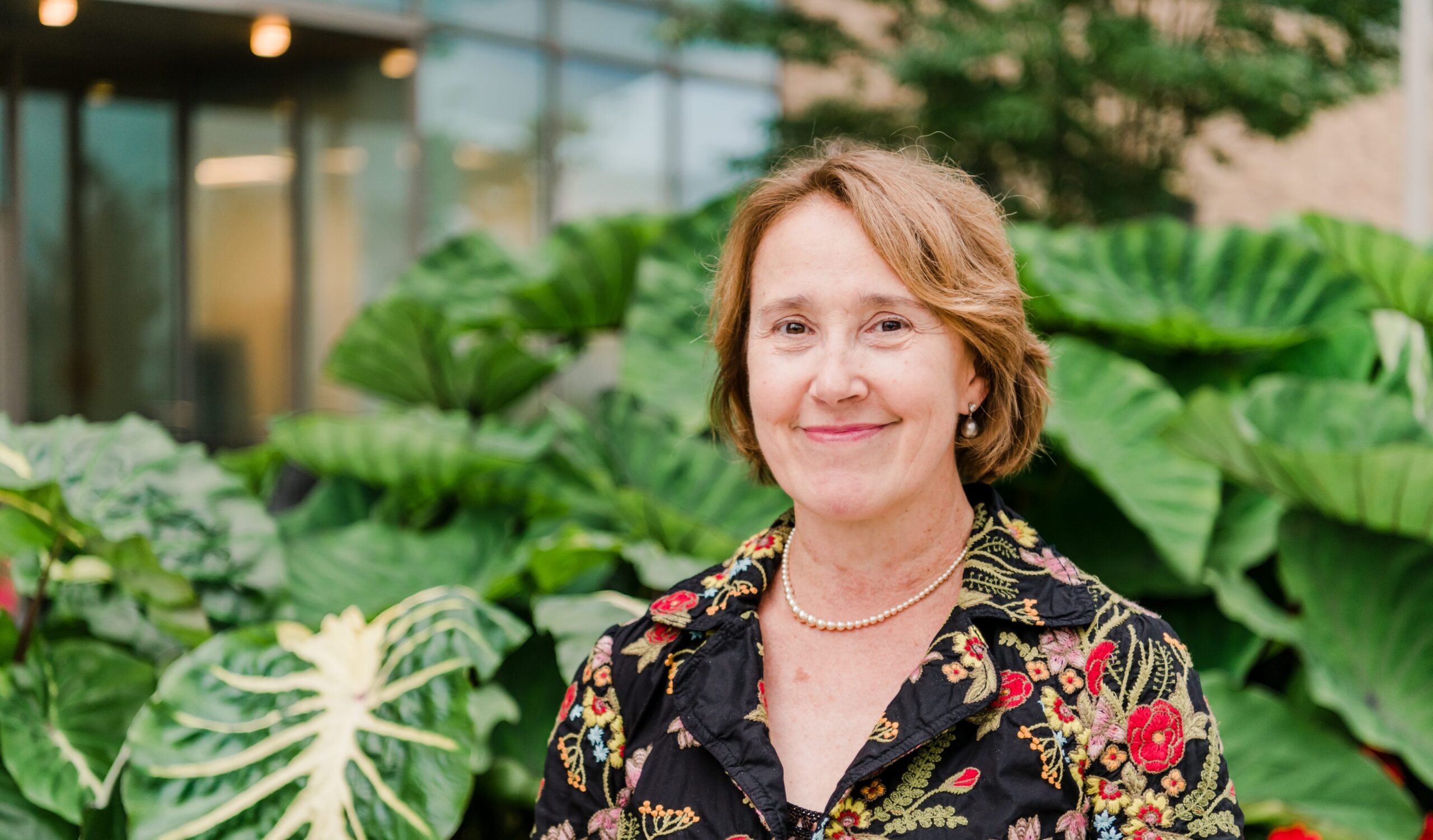Dana Bradley, the new dean of the Erickson School for Aging Studies, considers herself an accidental gerontologist. Many leaders in aging services are inspired to work in the field through personal experiences with family members aging, but Bradley’s interest emerged in the classroom. She began to pursue research on programs and services for older adults and their families as a graduate student through curiosity about big questions and a passion for innovation across disciplines.
“I knew I would always find an interesting job in the field of aging,” says Bradley. “I came to UMBC because the Erickson School’s focus is on leading and being on the edge through engaged scholarship with endless possibilities.”
Bradley holds a Ph.D. in applied history and public policy from Carnegie Mellon University and has served in faculty and leadership positions at the University of North Carolina-Charlotte and Western Kentucky University, where she directed the Center for Gerontology. At UMBC, in addition to serving as dean of the Erickson School, she is a professor of sociology, anthropology, and health administration and policy, and serves on the advisory board The Hilltop Institute, which focuses on healthcare policy.
Addressing the process of aging
Throughout her career, Bradley’s goal has been to help people understand the process of aging. “We are all aging,” she explains. “The better we understand how people manage life as they age the better products, services, and living environments we can create, with a lasting impact for our families and communities.”
This spirit of empowerment about how we think of aging led Bradley to become a founding member of the Global Aging Research Network and leader in the Age-Friendly Cities movement. In recognition of her decades of contributions to the field, she was elected a fellow of the Gerontological Society of America and the Academy for Gerontology in Higher Education.
Bradley is energized by the breadth of expertise in the Erickson School, and the opportunities available through UMBC ’s entrepreneurial and collaborative culture, and close proximity to Washington D.C. “The Erickson School covers a lot of policy issues and issues that are not related to long-term care,” she shares. “We are developing programs and research collaborations looking at how we support and maintain people as they age in the workforce, whether that may be out of choice or because they may not be able to afford retirement. We want to innovate solutions for a workforce that is engaged much longer than ever before.”
Calling all innovators
Innovation, engaged research, and collaboration all have one thing in common, Bradley points out — questions. “The questions are mind-boggling,” she says. It isn’t just how to serve an aging workforce that keeps her busy but looking beyond. Bradley believes, “This is a world where engineers, designers, coders, visual artists, musicians, writers, mathematicians, economists—you name it—they are all needed to design living, working, and transportation spaces that are responsive to how humans age. This is a collective question that needs answers from all fields.”
For the year ahead, Bradley is particularly excited about the Erickson School’s annual summit for leading researchers in memory care at Disney World. Even in the “Happiest Place on Earth,” Dr. Bradley is applying research to help create inclusive experiences. “This year we are focusing on creating environments which are supportive for people with dementia,” she says. “We are spending some time behind the scenes at Disney World, understanding how they as a company think about that issue with their guests.”
Whether it’s in the classroom, at an academic conference, or working with a company or a community, Bradley explains, “Our work is always about supporting engaged conversations to discuss aging given the resources and tools to plan and act accordingly, to be responsible and ethical citizens, to be engaged with people of many different ages in their lifetime.”
Banner image: Dean Bradley outside of the Performing Arts and Humanities Building. Photo by Marlayna Demond ’11 for UMBC.
Tags: CAHSS, CNMS, COEIT, EricksonSchool

